Overview
Hampta Pass, Chandratal Trek From Green Valleys to Desert Skies, Journey from Manali to Spiti Valley
“Hampta Pass” derived from Hampta Village. Hampta Pass Trek is an altitude of 14,107 feet in the Himalayan Pin Panjal range and it is the passage between Lahaul and Kullu, or Manali valley of Himachal Pradesh. Hampta Pass Trek, This region has rich Flora and Fauna but, on the other hand, the Lahaul valley has barren lands and is deserted.Therefore, go through quaint villages and explore two different cultures. In ancient times, the trail was a trade route. Thus, now it is frequently used by the shepherds in summers to find grasslands in the deserted Lahaul, Spiti valley.The Hampta Pass and Chandratal Trek is a popular trekking route in the Indian state of Himachal Pradesh.
Here are some highlights of the trek:
Beautiful Scenery: The trek offers stunning views of the snow-capped Himalayan peaks, lush green valleys, and the turquoise blue waters of Chandratal Lake.
Hampta Pass: The trek takes you through the Hampta Pass, which is located at an altitude of 4,270 meters above sea level. The pass offers breathtaking views of the surrounding mountains.
Chandratal Lake: The trek also takes you to the beautiful Chandratal Lake, which is located at an altitude of 4,300 meters above sea level. The lake is known for its clear blue waters and is surrounded by snow-capped mountains.
Cultural Experience: The trek takes you through several small villages where you can experience the local culture and traditions of the people living in the region.
Moderate Trek: The trek is of moderate difficulty level and is suitable for both beginners and experienced trekkers.
Camping Experience: The trek offers an opportunity to camp under the stars in the midst of the beautiful Himalayan mountains.
Overall, the Hampta Pass and Chandratal Trek is a must-do trek for adventure enthusiasts who want to experience the beauty of the Himalayas and the culture of Himachal Pradesh.
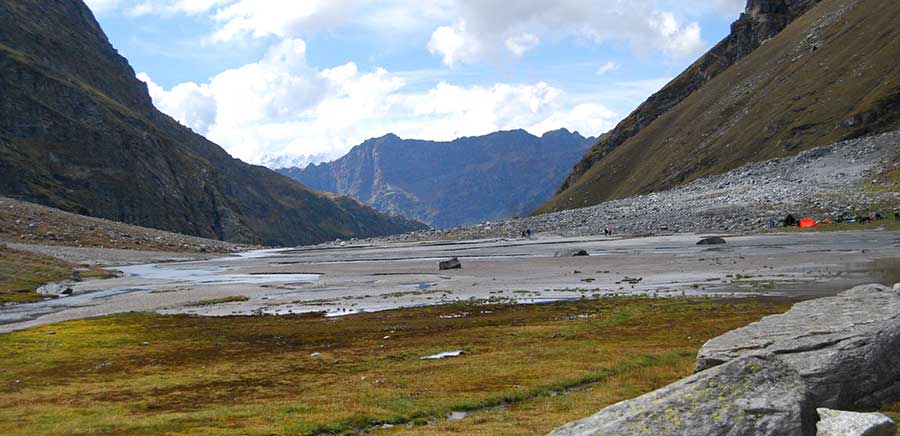
Hampta Pass Trek Itinerary: A 5-Day Adventure from Manali to Chandratal
Day 1: Manali to Jobra (Drive) → Trek to Chika Camp
- Pickup: 09:00 AM from Manali | Drive: 22 km to Jobra by taxi | Trek: 3 km (1-2 hours) to Chika Camp (3,078m) | Stay: Overnight in camps
Day 2: Chika Camp to Balu Ka Ghera
- Trek: 8 km (4-5 hours) | Altitude: 3,783m | Stay: Overnight in camps
Day 3: Balu Ka Ghera to Shea Goru via Hampta Pass
- Trek: 12 km (6-7 hours) | Highest Altitude: Hampta Pass (4,310m) | Descend To: Shea Goru Camp (3,735m) | Stay: Overnight in camps
Day 4: Shea Goru to Chhatru → Drive to Chandratal & Back
- Trek: 5 km (3-4 hours) to Chhatru Camp | Drive: 156 km (5-6 hours) to Chandratal (4,300m) and back to Chhatru | Stay: Overnight in camps
Day 5: Chhatru to Manali via Atal Tunnel
- Drive: 140 km via Atal Tunnel (4,114m) | Arrival: Reach Manali by 2:00 PM
Best Time for Hampta Pass Trek: July to September Adventure in the Himalayas
The Hampta Pass trek, known today in popular trek not only in India but all over the world, its beauty is hidden from no one, fame retains its original form to all, Hampta Pass is this symbol of beauty, people who have special knowledge of trekking, the same people come to do this trek in the lap of this Pawan Dev Bhoomi Himachal, thousands of people come here every year in the months of July and August, this trek It is also special that it starts from Manali, the beautiful city of Himachal,
The Hampta Pass and Chandratal trek is a stunning adventure in the Indian Himalayas, combining breathtaking landscapes with diverse ecosystems. Here’s a breakdown of trekking during July and August:
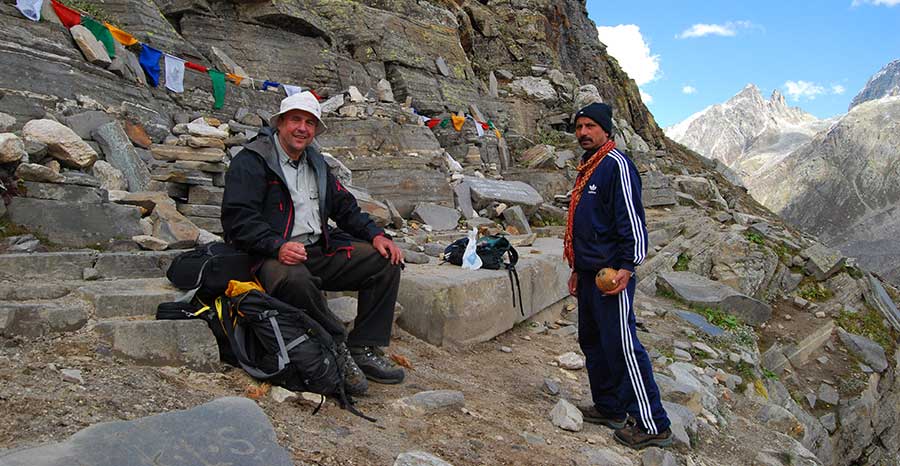
Best Time to Visit Hampta Pass and Chandratal Trek – Plan Your Adventure
July and August are generally considered good months for the Hampta Pass and Chandratal trek, but they come with certain considerations:
July
- Monsoon Season: July marks the beginning of the monsoon season in India. While the trails are lush and green, the rainfall can lead to slippery paths and potential landslides.
- Flora: The landscape is vibrant with blooming flowers and greenery, making it visually stunning
August
- Peak Monsoon: August continues the monsoon, often bringing heavy rains, especially in the lower regions. However, the weather can be more stable towards the end of the month.
- Scenic Beauty: The mountains are incredibly lush and alive during this time, offering a picturesque backdrop for trekking.
- Fewer Trekkers: While July tends to attract many trekkers, August might see fewer crowds, providing a more serene experience.
Considerations
- Weather: Be prepared for sudden weather changes, including rain and fog. Carry waterproof gear.
- Trail Conditions: Be aware that trail conditions can vary significantly. Some paths may become difficult to navigate due to mud or water.
- Guided Treks: It’s advisable to trek with a local guide or join a group to ensure safety and navigation, especially during the monsoon.
Recommendations
- July: If you love greenery and don’t mind some rain, this can be a beautiful time to trek. Just be cautious of the trails.
- August: If you prefer slightly drier conditions and can handle occasional rains, late August might be a better option as the monsoon begins to recede.
Trekking Tips for Hampta Pass and Chandratal – Plan Your Adventure Wisely
- Physical Fitness: Prepare physically for a moderate to challenging trek.
- Acclimatization: Spend adequate time acclimatizing to higher altitudes to avoid altitude sickness.
- Gear: Invest in quality waterproof trekking gear, sturdy shoes, and a good backpack.
- Hydration and Nutrition: Stay hydrated and carry enough snacks to maintain energy levels.
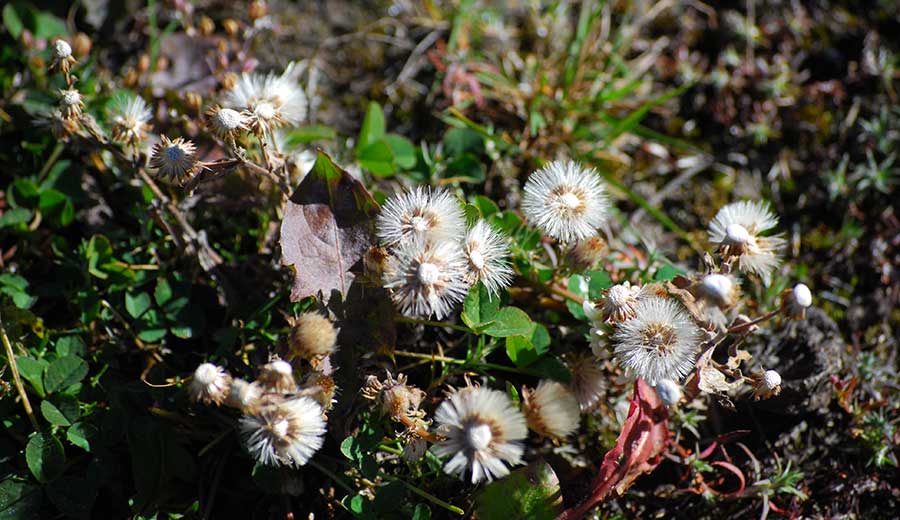
Hampta Pass Chandratal Trek: Where Scenic Beauty Meets Adventure
- Ancient Trade Routes:
- The region around Hampta Pass has historically served as a trade route connecting the lush Kullu Valley with the arid landscapes of Spiti Valley.
- It was used by traders and locals for centuries, facilitating the exchange of goods and culture between these contrasting regions.
- Cultural Significance:
- The trek passes through several small villages inhabited by local tribes, such as the Gaddi people, who have a rich tradition of shepherding and herding.
- You may encounter local shepherds who have been living in harmony with nature for generations, offering insight into their way of life and cultural practices.
- Religious and Mythological Importance:
- The region is steeped in myths and legends, with many stories related to local deities and natural formations.
- Chandratal Lake, also known as the Moon Lake, is considered sacred in Hindu mythology. It is said to be the place where the moon descended to Earth.
- Buddhist Influence:
- The nearby Spiti Valley is home to several ancient Buddhist monasteries, such as Key Monastery and Tabo Monastery, which are among the oldest in the region.
- The trek provides a glimpse into the influences of Buddhism on the culture and traditions of the local communities.
Stunning Views
- Lush Green Valleys:
- As you start your trek from Jobra, the initial stages are marked by vibrant green meadows, dense forests, and clear streams, showcasing the rich biodiversity of the region.
- Hampta Pass:
- At an elevation of about 4,270 meters (14,000 feet), crossing Hampta Pass offers panoramic views of majestic snow-capped peaks and vast valleys.
- The contrast between the green Kullu Valley on one side and the barren landscapes of Spiti on the other is striking.
- Chandratal Lake:
- Known for its stunning turquoise-blue waters, Chandratal Lake is surrounded by high mountains and offers breathtaking views, especially during sunrise and sunset.
- The reflection of the peaks in the lake creates a mesmerizing sight, making it a photographer’s paradise.
- Starry Nights:
- The clear skies in the Himalayan region provide an exceptional opportunity for stargazing. The view of the Milky Way on a clear night is a magical experience.
- Rugged Terrain:
- The trek through diverse terrains, from lush meadows to rocky paths and alpine forests, offers changing landscapes and dramatic views at every turn.
Why Hampta Pass Trek: A Journey Through Beauty and Adventure
A stunning Trans Himalayan crossover trek that will blow your mind, Hampta Pass trek will surprise you with dramatic and rapid changes in the scenery. Before going in details about this trek, we would like to give an introduction of Hampta Pass. Perched at an altitude nearly to 14,107 ft surrounded by the mighty Himalayas the trail begins with the campsite of Jobra where here one will cut through a lot of forests.
The next campsite is Jwara, furnished with carpet full of flowers in short wildflower meadow at the meeting point of valley. Your eyes will welcome you with the drama on the terrain. From a green valley to cold barren desert. After crossing Jwara, the next campsite is Balu Ka Ghera and thereafter Shea Goru which is the desert oasis. If you are looking for a five-day short itinerary, Hampta Pass is the perfect trek full of surprises and eye opener which will leave you in awe.
How Challenging is the Hampta Pass Chandratal Trek?
The Hampta Pass to Chandratal trek is considered moderate in difficulty. Here’s a breakdown of what to expect:
Trek Details, Duration and Distance
- Duration: Typically 5 days from manali to manali
- Distance: About 26 kilometers
- Terrain- The trek involves diverse terrains, including lush green valleys, rocky paths, and river crossings. You’ll encounter steep ascents and descents, especially when crossing the Hampta Pass at an altitude of around 14,000 feet (4,267 meters).
- Altitude- The trek reaches high altitudes, which can lead to altitude sickness for some trekkers. Acclimatization is essential.
- Weather Conditions- Weather can be unpredictable, with temperatures varying significantly between day and night. Proper gear is crucial.
- Fitness Level- A reasonable level of fitness is required. Regular cardio and strength training can help prepare you for the trek.
- Experience Level- Previous trekking experience can be beneficial, but beginners with good physical fitness can also undertake this trek.
- Highlights- Beautiful landscapes, including the stunning Chandratal Lake and the dramatic views from Hampta Pass.Opportunities to experience local culture and wildlife.
In summary, while the Hampta Pass to Chandratal trek is manageable for those in good health, it’s advisable to prepare adequately and consider prior trekking experience to fully enjoy the adventure
Is the Hampta Pass Trek Safe for Beginners?
Yes, the Hampta Pass trek can be considered safe for beginners, provided they take some precautions and prepare adequately. Here are some points to consider:
Safety Aspects for Beginners
- Guided Treks: Opting for a guided trek is highly recommended. Experienced guides can ensure your safety, provide assistance, and offer valuable insights about the route.
- Acclimatization: The trek involves high altitudes, so it’s important to acclimatize properly. Beginners should take it slow and listen to their bodies to avoid altitude sickness.
- Fitness Level: A reasonable level of fitness is necessary. Engaging in regular physical activity leading up to the trek can help. Cardiovascular exercises, such as walking, running, or cycling, and strength training can be beneficial.
- Weather Preparedness: Weather conditions can change rapidly in the mountains. Beginners should be prepared with the right clothing and gear for varying temperatures and possible rain or snow.
- Trekking Gear: Invest in good-quality trekking gear, including sturdy trekking shoes, a comfortable backpack, and appropriate clothing. Proper gear can significantly enhance safety and comfort.
- Group Trekking: Trekking with a group can provide additional safety. Having fellow trekkers can help in case of emergencies or difficulties.
- Hydration and Nutrition: Staying hydrated and maintaining energy levels with proper nutrition is crucial. Carry enough water and snacks for the trek.
Hampta Pass Trek: Fall in Love with the Best Himalayan Trail Experience
So, the Hampta Pass trail is easy to fall in love with! Because of rich flora and fauna and opportunity to spot rare Himalayan birds and animals. Also, witness cascading waterfalls, dense forests and variety of trees with barren lands. The Hampta valley has such dramatic changes because it is narrow and funnel shaped till Chatru.
Hampta Pass Trek: Weather Conditions and Best Time to Trek
Weather conditions depend on the time of the year trekkers are travelling. Months from June to September experience moderately good temperatures during the day with substantially colder nights accompanied by little to snow hampta pass summit point surrounding peak. In Hampta Pass, you will have a beautiful experience of the temperature of both Green and Dry Valley areas.
Manali: The Base Camp for Hampta Pass Trek
Once Manali was a quiet Market but it transformed into a famous bustling town in Kullu, Manali valley of Himachal Pradesh.
It has become a popular tourist attraction and works as the gateway to Lahaul, Spiti and Leh. Ladakh And, also Manali is the base camp of many Himalayan treks. There are charming snow capped peaks, Deodar trees and gushing Beas – No Doubt, this beautiful hill station is for nature lovers because it’s no less than a paradise. It holds a legendary history and there are ancient temples which gives an idea of Manali’s past. Here, apples, Pear and Plum are the major source of income for most of the inhabitants.
Why Choose the Hampta Pass Trek?
Before heading towards the itinerary, it is really essential to perceive the reason behind choosing Hampta pass trek. See firstly, the trekking distance is a total of by taxi 296 Km and on foot 29 km which is to be covered into 5 days. Manali to Jabra, cheeka, Balu ka Gera, shea Geru, Chatru, Chandratal, via rohtang pass. Hampta Pass Trek is a low altitude mountain trek Altitudes is 4310 Meters. The Starting trail is easy to moderate as compare to other treks
Need proper gear & clothing for sub-zero temperature?
You got to see so many heavenly bodies at one place like the panoramic view of the Himalayan ranges, you can see pine forests, different variety of flora and fauna surpassing through bona fide Garhwali culture.I think Do spare time in Interaction with our local’s team, and you will get to know about some of the ancient tales of Indian mythology and our local cultures, this is good ideas for trekkers. Beautiful landscapes so carry proper photo gear & Extra battery backup.The backpack should not exceed 10 to 12 kg only
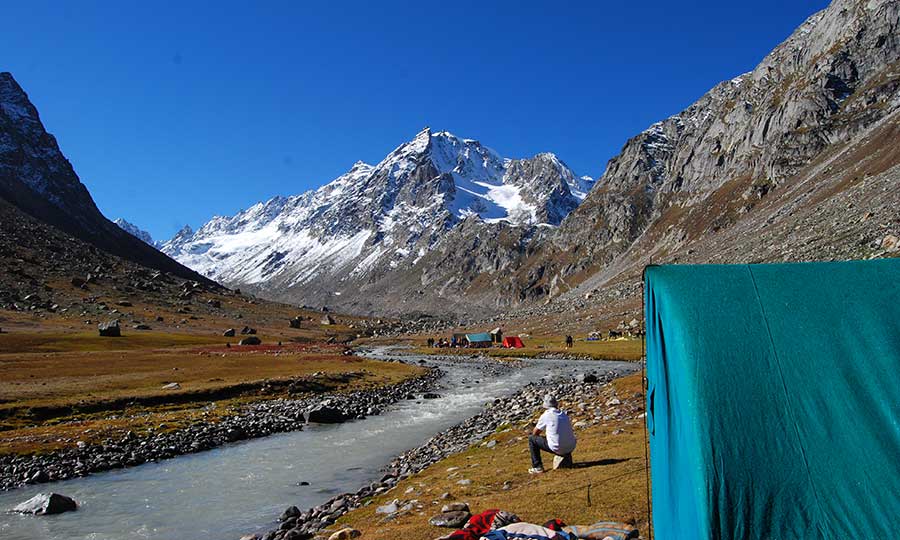
Why you should choose Himalayan Hikers ?
Choosing Himalayan Hikers for your trekking adventures offers several advantages that enhance the overall experience. Here are some reasons to consider:
1. Expert Guidance
- Experienced Guides: Himalayan Hikers employs knowledgeable and experienced guides familiar with the terrain, culture, and weather patterns, ensuring a safer trek.
- Local Knowledge: Guides provide insights into local flora, fauna, and culture, enriching your trekking experience.
2. Tailored Itineraries
- Customizable Packages: They offer a range of trekking packages that can be tailored to suit your preferences, fitness level, and schedule.
- Diverse Options: From easy treks for beginners to challenging routes for experienced trekkers, there are options for everyone.
3. Safety First
- Emphasis on Safety: Himalayan Hikers prioritizes safety by ensuring proper acclimatization, providing first aid kits, and conducting health checks during the trek.
- Insurance and Emergency Support: Many packages include insurance options and emergency support systems for added peace of mind.
4. Sustainable Practices
- Eco-Friendly Trekking: Himalayan Hikers promotes responsible trekking practices to minimize environmental impact, supporting local communities and conservation efforts.
- Waste Management: They implement waste management strategies on treks to preserve the pristine beauty of the Himalayas.
5. Quality Equipment
- Reliable Gear: They provide high-quality trekking gear and equipment, ensuring trekkers have what they need for a comfortable and safe journey.
- Regular Maintenance: All equipment is well-maintained and regularly checked for safety.
6. Comprehensive Support
- Pre-Trek Briefing: Before the trek, participants receive a thorough briefing on what to expect, including physical preparation and gear requirements.
- 24/7 Assistance: Support is available throughout the trek, ensuring trekkers feel secure and well cared for.
7. Community Engagement
- Cultural Experiences: Himalayan Hikers offers opportunities to engage with local communities, providing authentic cultural experiences and supporting local economies.
- Workshops and Activities: They often include activities like cooking classes or traditional crafts to enhance the cultural immersion.
8. Positive Reviews and Reputation
- Client Testimonials: Many trekkers have had positive experiences with Himalayan Hikers, often highlighting their professionalism and dedication to customer satisfaction.
- Awards and Recognition: They may have received awards or recognition from trekking organizations or tourism boards, reflecting their commitment to quality.
Your Travel Plan for Hampta Pass Trek
You can book trains, air flights, and bus tickets for your journey only according to the information given by us.The Hampta pass trek will be of 5 days from Manali to Manali, includes travel.First of all, all the trekkers will have to book their flight and train bus according to our time table as our pick up is from 9:00 am to 10:00 am, you will have to reach Manali Bus Stand, Mall Road in the morning.
- A taxi from Himalayan hikers will link you to the Manali bus stand, near mall road.
- Himalayan Hikers organize transport to the Jabari base camp from the Manali bus stand. Our vehicles leave at 9:00 am to 10:00 am sharp from Manali. Sharing taxi costs include your package. In the Manali bus stand, you will get our taxi staff that will arrange transport for you. The contacts no Transport coordinator or our office team will give you a week ago to your departure.
- Please you guys book your transport facility according to your own time table, after Himalayan hikers take all the responsibility of Manali to Manali, that you will not face any problem.Your trek ends at Manali day 05th evening 1:30 pm. Manali is a beautiful city in Himachal here available public transport for all over State in India. Booked your return bus tickets directly Manali bus stands.
How to Reach Manali Mall Road for Hampta Pass Trek?
To reach Manali for the Hampta Pass Trek, here’s a detailed guide based on your travel from major cities like Kolkata, Bangalore, Chennai, Pune, Mumbai, or anywhere in Gujarat:
Step-by-Step Journey to Manali
1. Travel to Delhi
- By Air: Book a flight to Indira Gandhi International Airport (DEL), Delhi. This is the most convenient option if you’re coming from distant cities.
- By Train: Alternatively, you can take a train to New Delhi Railway Station. This is a viable option for many travelers.
2. Delhi to Bhuntar (Kullu Manali Airport)
- By Air: From Delhi, you can take a direct flight to Bhuntar Airport (KUU), which is the nearest airport to Manali. The flight takes about 1 to 1.5 hours.
3. Bhuntar to Manali
- By Road: After arriving at Bhuntar, take a taxi or a local bus to Manali. The distance is approximately 50 kilometers, and the journey takes about 1.5 to 2 hours.
4. Alternative: Delhi to Manali
If flights to Bhuntar are not available or if you prefer overland travel, you can take a bus directly from Delhi to Manali:
- By Bus: Several private and state-run buses operate overnight services from Delhi to Manali. The journey typically takes around 12-14 hours, depending on traffic and road conditions.
Summary of Travel Route
- Your City → Delhi (Flight/Train)
- Delhi → Bhuntar (Flight) or Delhi → Manali (Bus)
- Bhuntar → Manali (Taxi/Bus)
Additional Tips
- Plan Ahead: Make your travel arrangements in advance, especially during peak trekking seasons, as both flights and buses can get booked quickly.
- Acclimatization: Arriving in Manali a day early is recommended to acclimatize to the altitude and prepare for the trek.
- Check Flight/Buses Availability: Always check the latest schedules and availability for flights and buses to ensure a smooth journey.
Option 02:- By Bus
You can reach Manali from Delhi by a bus, board it from (Delhi) Kashmiri Gate, ISBT; it is good if you are booked the seats. It is a 10-11 hour bus journey from Delhi to Manali bus stand, near mall road.
(Reach Manali bus stand between 5:00 am to 6:00 am and the vehicle will be arranged from there.)
ATM Point and Mobile Connectivity in Hampta pass
Here’s what you need to know about ATM points and mobile connectivity during the Hampta Pass Trek:
ATM Points
- Manali: The nearest ATM is located in Manali. Make sure to withdraw sufficient cash before starting the trek, as there are no ATMs available along the trek route.
- Kullu: There are ATMs in Kullu, which is also relatively close to Manali.
Mobile Connectivity
- Manali: Mobile networks are available in Manali with good connectivity for most service providers.
- During the Trek:
- Limited Connectivity: As you ascend beyond Manali and start the trek, mobile connectivity becomes limited.
- Signal Availability: You may have weak or no signal in higher altitude areas, particularly after reaching areas like Balu Ka Ghera and Hampta Pass.
- Network Providers: Networks like Airtel, BSNL, and Jio may have some coverage in certain areas, but it is not guaranteed.
Recommendations
- Inform Family/Friends: Before starting the trek, inform your family or friends about your plans and expected return dates.
- Emergency Communication: If you are trekking with a guided group, they often carry a satellite phone or a local communication device for emergencies.
- Cash: Carry enough cash for food, accommodation, and any other expenses during your trek, as there are no opportunities to withdraw cash once you leave Manali.
What do we do for safety in Hampta Pass trek?
First of all, the safety of trekkers is much more for us, if you see in the trek, then there are all the risks, which I do not think about.
Himalayan Hikers worry more about you that no one should ever have any problem in the trek.
What should we and you keep more safety in the trek
- Whenever you are going for any trek, it is very important that you go completely fit and ready.
- The trek is Moderate, if you make your feet and your mind calm and strong, you will find the trek very easy.
- While trekking, keep in mind that you are walking on the right route or not always with your guide.
- Most people look somewhere and where they are walking, this can cause twitching in your legs, which can ruin your entire trek.
- It is important to ask your doctor if you have any medical problems
- I should always keep my medical kit with me, it is very important.
- Himalayan Hikers always keep a medical kit with you, such as oxygen cylinders, medicine to be given in emergency on the trek
- If any trekkers have any more problems, then they are brought back to the base camp by laying them in the stretcher.
- Our camp in Hampta pass trek is around the 6000ft to 11000 ft where you can not have any problem of oxygen
- In case of any medical problem, the help of your guide or a well-informed trekkers should be taken
- If there is major health problems in Hampta pass trek, then Nearest Hospital is in Manali which is about 32 Kms away from Hampta pass trek
- Remember that when we go on any trek, we go from low altitude to high altitude, it does not cause much problem on us.
- Our camps also move forward day by day and our bodies also work with the altitudes that are safe for trekkers
- Along with the trek we keep getting acclimatization
Itinerary
Day 1 : Pickup to you from Manali Mall Road 9:00 am same day Drive to Jobra by taxi (22km) same day trek to Cheeka camp.
Total distance – 26 km – 4/5 Hours journey
Mode of journey – By taxi 22 km and On foot 04 km
Altitude – Cheeka camp – 3078 Meter
Night stay – Our Campsite – on twin share basis
All trekker meet of group leader manali mall road head 9:00 am , Manali to Jobra is reached by vehicle. Manali is situated at an elevation of 6,700 above sea level. It is a very good place to acclimatize before starting the trek. On the first day you will reach the height of 10,100 ft. The trek on foot starts from Allain Guhugal Hydro power Project Junction. While crossing the main route, you will find a variety of trees like maple, deodar and oak. The view is extremely refreshing.
The trek from Jobra to Cheeka Camp is part of the popular Hampta Pass trek in the Himachal Pradesh region of India. The Moderate level of this trek can vary depending on several factors such as weather conditions, your fitness level, and previous trekking experience.
Generally, the trek from Jobra to Cheeka Camp is considered to be of moderate difficulty. The trail involves a gradual ascent through beautiful forests and meadows, with occasional steep sections. The distance is approximately 04 kilometers, and it typically takes around 4-6 hours to complete, depending on your pace and the conditions of the trail.
While it’s not extremely challenging, it’s still important to be adequately prepared with proper trekking gear, including sturdy hiking boots, sufficient water, snacks, and appropriate clothing layers. Additionally, acclimatization to the altitude is crucial, as you’ll be ascending to higher elevations throughout the trek. It’s advisable to take it slow, stay hydrated, and listen to your body to avoid altitude sickness or exhaustion. Overnight stay Camp Cheeka
Day 2 : Trek from Cheeka camp to Balu ka Gera
Total distance – 08 km – 4/5 Hours journey
Mode of journey – On foot
Altitude – Balu ka Gera camp – 3783 Meter
Night Stay – Our Campsite – on twin share basis
Post breakfast, start trekking to Balu ka Gera. It is a 4 hour easy ascent to Balu Ka Gera; your campsite for the day. The trail is an easy one along the banks of river for most of the journey. This trail leads to rough terrain and slop of boulders.
The distance from Cheeka Camp to Balu Ka Gera is approximately 6-7 kilometers, and it typically takes around 5/6 hours to complete, depending on your pace and the conditions of the trail.
The terrain includes a mix of gradual ascents, rocky paths, and some steep sections. You’ll pass through beautiful landscapes of alpine meadows and might encounter streams along the way. The views of the surrounding mountains are breathtaking and make the trek quite enjoyable.
While it’s not overly strenuous, it’s important to be prepared with proper trekking gear, including sturdy hiking boots, sufficient water, snacks, and appropriate clothing layers. As with any high-altitude trek, acclimatization is crucial, so it’s advisable to take breaks as needed and listen to your body.
Overall, while the trek from Cheeka Camp to Balu Ka Gera presents some challenges, it’s manageable for most people with a moderate level of fitness and trekking experience. As always, it’s essential to be cautious, especially in adverse weather conditions, and to respect the natural environment.
Balu Ka Gera is surrounded by mountains and is lush green, perfect for camping. Pitch your tents here, have your dinner and retire for the night.
Day 3 : Trek from Balu ka Gera to via Hampta pass (4310 Meter) Shea Goru camp
Trek Distance – 12 km – 6/7 Hours journey
Mode of journey – On foot
Altitude – Shea Goru camp – 3735 Meter
Night Stay – Our Campsite – on twin share basis
The trek from Balu Ka Gera to Shea Goru Camp via Hampta Pass is the most challenging part of the Hampta Pass trek. It involves crossing the high-altitude Hampta Pass, which stands at an elevation of 4,310 meters (around 14,140 feet). This segment of the trek is known for its stunning but demanding terrain.
The distance from Balu Ka Gera to Shea Goru Camp via Hampta Pass is approximately 12 kilometers, but the altitude gain and the terrain make it a challenging endeavor. Depending on the weather conditions and your pace, it can take anywhere from 7 to 8 hours to complete this section.
The trek begins with a steep ascent from Balu Ka Gera towards Hampta Pass. The trail involves navigating rocky paths, scree slopes, and possibly some snow patches, particularly if you’re trekking during the early summer months. As you ascend towards the pass, the air becomes thinner, making it more physically demanding.
Once you reach Hampta Pass, you’ll be rewarded with breathtaking panoramic views of the surrounding Himalayan peaks. After spending some time at the pass, you’ll descend towards Shea Goru Camp. The descent involves steep sections and loose rocks, so it’s essential to proceed with caution.
Due to the high altitude and challenging terrain, this segment of the trek requires proper acclimatization, physical fitness, and trekking experience. It’s crucial to be well-prepared with appropriate gear, including warm clothing, trekking poles, sturdy boots, and plenty of water and snacks.
Overall, while the trek from Balu Ka Gera to Shea Goru Camp via Hampta Pass is physically demanding, the unparalleled views and sense of accomplishment make it a memorable experience for trekkers. However, it’s essential to prioritize safety and listen to your body throughout the journey.
Day 4 : Trek from Shea Goru camp to Chatru camp – (05 km) same day drive to Chandratal (4300 Meter) back to Chatru camp (157 km) (5/6 Hours)
Trek Distance – 157 km – 9/10 Hours journey
Mode of journey – On foot – 5 km – by taxi -156 km
Altitude –Chatru camp – 3735 Meter
Night Stay – Camp site – on twin share basis
The trek from Shea Goru Camp to Chatru Camp is relatively short, spanning about 5 kilometers. However, the subsequent journey involves a drive to Chandratal Lake and then back to Chatru Camp, covering a distance of approximately 156 kilometers. This itinerary is usually completed within 5 to 6 hours.
Here’s a breakdown of the journey:
- Trek from Shea Goru Camp to Chatru Camp (5 kilometers): This trekking portion is relatively easy compared to some of the previous stretches. It typically takes around 2 to 3 hours to cover this distance. The trail may involve some gradual descents as you make your way towards Chatru Camp.
- Drive from Chatru Camp to Chandratal Lake (about 76 kilometers): After reaching Chatru Camp, you’ll embark on a jeep drive to Chandratal Lake. The drive is scenic but can be bumpy and challenging due to the rugged terrain. It usually takes around 4 to 5 hours to reach Chandratal from Chatru, depending on road conditions and weather.
- Exploration and Relaxation at Chandratal Lake: Upon reaching Chandratal Lake, you’ll have some time to explore the area, take in the breathtaking views, and relax by the serene lake. Chandratal, situated at an altitude of 4,300 meters, offers stunning vistas of the surrounding mountains and is a popular camping spot.
- Drive back to Chatru Camp (about 80 kilometers): After spending some time at Chandratal, you’ll drive back to Chatru Camp. The return journey takes roughly the same amount of time as the outbound drive, around 4 to 5 hours.
Overall, this itinerary offers a mix of trekking, scenic drives, and exploration of Chandratal Lake. It’s essential to be prepared for variable weather conditions and to ensure that you have adequate provisions for the journey, including water, snacks, warm clothing, and sunscreen. Additionally, it’s advisable to confirm the road conditions and availability of transportation beforehand, especially if you’re arranging for private vehicles or hired jeeps.
Day 5 : Drive from Chatru camp to Manali via Atal Tunnel (4114 Meters) to Manali (140 km) Reach evening at 3 pm
Trek Distance – 140 km – 5/6 Hours journey
Mode of the journey – By Taxi
Today’s last breakfast
The drive from Chatru Camp to Manali via the Atal Tunnel offers breathtaking views of the majestic Himalayan landscapes and picturesque valleys. Here’s what you can expect to see on the way:
- Chandra River Valley: As you depart from Chatru Camp, you’ll follow the Chandra River Valley, which is flanked by towering mountains and lush greenery. The river originates from the Chandra Taal Lake and accompanies you for a significant part of the journey.
- Rohtang Pass: While not directly on the route to Manali via the Atal Tunnel, Rohtang Pass is a significant landmark that you might encounter depending on your route. It’s known for its scenic beauty, with snow-capped peaks, glaciers, and alpine meadows. However, with the Atal Tunnel bypassing Rohtang Pass, you may not need to cross it directly.
- Atal Tunnel: The highlight of the journey is undoubtedly the Atal Tunnel, which is one of the highest vehicular tunnels in the world. As you pass through the tunnel, which spans an elevation of 4,114 meters, you’ll be surrounded by solid rock and experience a change in climate from the rugged terrain of Lahaul Valley to the greener landscapes of the Kullu Valley.
- Kullu Valley: Upon exiting the Atal Tunnel, you’ll find yourself in the Kullu Valley, known for its scenic beauty and lush vegetation. The valley is dotted with quaint villages, apple orchards, and terraced fields. Keep an eye out for the Beas River, which flows through the valley, adding to its charm.
- Manali: As you approach Manali, you’ll be greeted by the sight of the town nestled amidst the mountains. Manali is a popular hill station known for its vibrant culture, bustling markets, and adventure activities. If you arrive in the evening around 3 pm, you’ll have time to explore the town, visit local attractions, and relax after your journey.
Things To Take
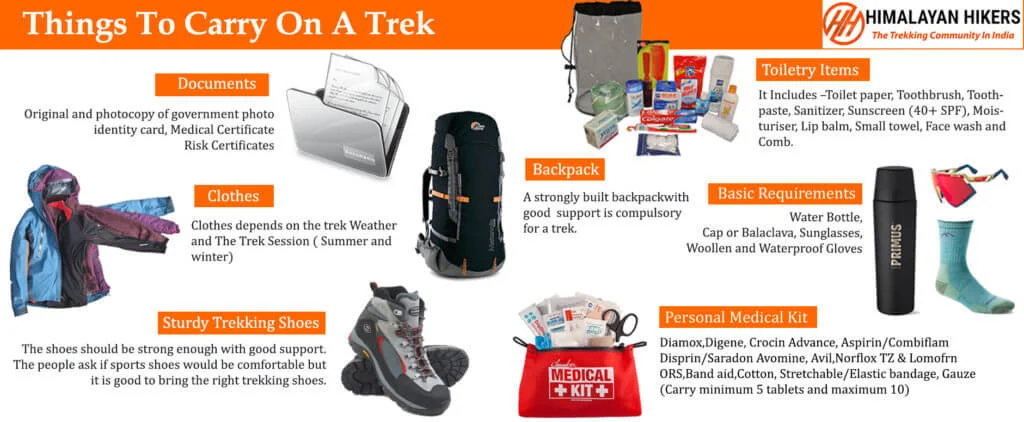
Mandatory Documents
Please carry the documents given below
- Original and photocopy of government photo identity card- (Aadhar Card, Driving License, Voters ID, etc,
- Passport and Visa important to foreigners
- Medical Certificate (First part should be filled by the Doctor and Second part by the Trekker)
- Declaration Certificates
Necessary Items for trekkers
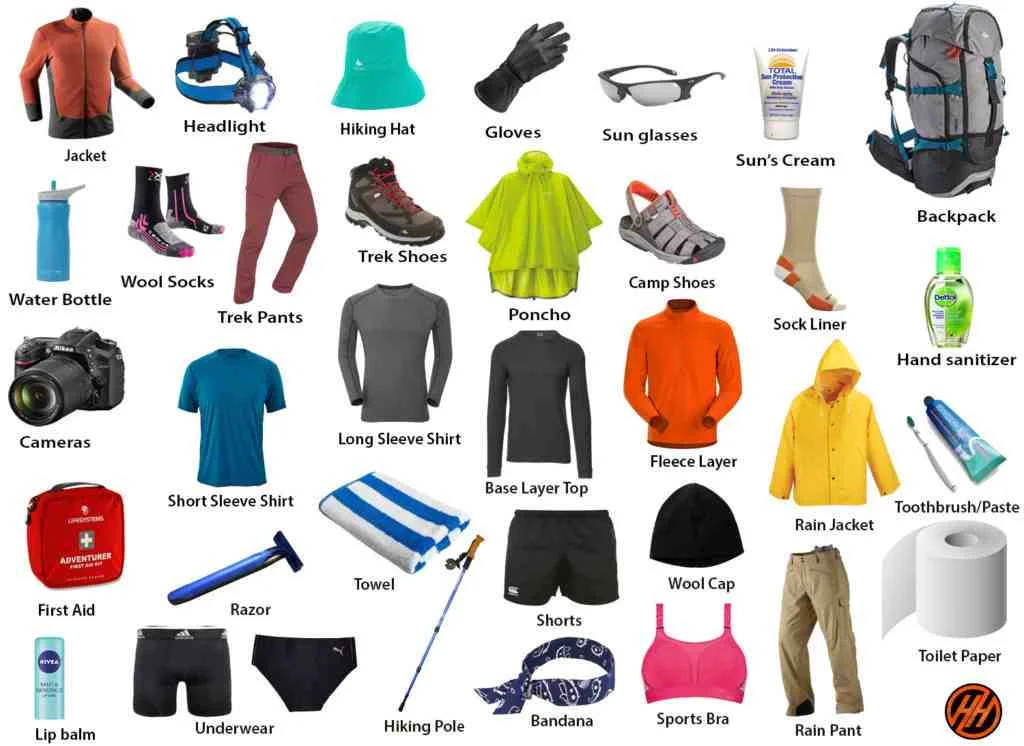
1. Basic Trekking Gears
| Name Of Item | Quantity |
|---|---|
| Trekking Backpack with rain cover | 50 – 60 liter capacity with comfortable shoulder straps |
| Daypack with rain cover | 20 – 30 ltr (If off-load opted) |
| Trekking Poles/ Walking Sticks | 1 |
| Water Bottle | 2 thermos flask bottles of one liter each |
| Snacks | Energy bars, dry fruits, electrolyte |
2. The Clothes You Should Bring On Hampta Pass Trek
| Name of Item | Quantity During Summer | Quantity During Winter |
|---|---|---|
| Quick dry collared T-Shirt | 2-3 | 2-3 (Full Sleeves) |
| Fleece T-shirt (Full Sleeves) | 2 | 2-3 |
| Fleece jacket | 2 | 2 |
| Down jacket | 1 (Available on rent) | 1 (Available on rent) |
| Thermal inner (Upper and Lower) | 1 Pair | 2 Pair |
| Quick dry Trek Pant | 2-3 Pair | 2-3 Pair |
| Waterproof gloves | 1 Pair | 1 Pair |
| Woollen gloves | 1 Pair | 1 Pair |
| Poncho or Rain Jacket and pant | 1 | 1 |
| Lightweight Quick Dry Towel | 1 | 1 |
3. Head Gears
| Name of Item | Quantity |
|---|---|
| Head torch | 1 (Himalayan Hikers provides when needed) |
| Sun Cap | 1 |
| Woolen cap | 1 |
| Balaclava | 1 |
| Buff / Neck-gaiters | 1 |
| Sunglasses | 1 |
4. Foot Gears
| Name of Item | Quantity |
|---|---|
| Trekking shoes | 1 Pair (High Ankle) |
| Flip-flops | 1 Pair |
| Cotton socks | 2-3 Pairs |
| Woollen socks | 2 Pairs |
| Gaiters | 1 Pair (Himalayan Hikers provides when needed) |
| Microspikes | 1 Pair (Himalayan Hikers provides when needed) |
5. Personal Care Essentials
| Name of Item | Quantity |
|---|---|
| Toothpaste | 1 |
| Toilet Paper | 1 roll |
| Sanitizer | 1 |
| Lip Balm | 1 |
| Light Towel | 1 |
| Moisturizer | 1 |
| Sunscreen (40 or 30 SPF) | 1 |
6. Carry a Personal Medical Kit
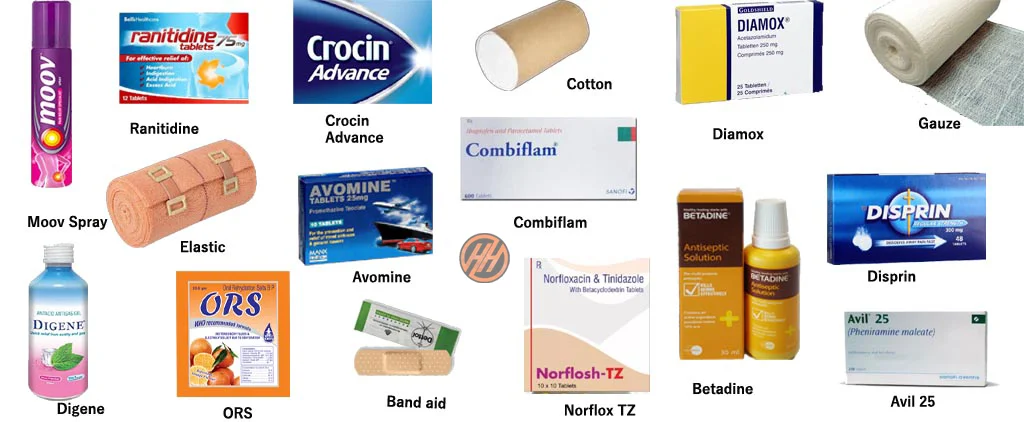
| Name of Item | Quantity |
|---|---|
| Pain Reliever | 1 Strip |
| Motion Sickness Medicine | 1 Strip |
| Fever and Headache Medicines | 1 Strip |
| Medicine for Allergies | 1 Strip |
| Medicine for Diarrhoea | 1 Strip |
| Sprains Cream or Spray | 1 |
| Antiseptic Cream | 1 |
| ORS | 1-2 |
| Band-aid | 5-6 |
| Cotton | 1 |
| Gauze | 2 |
| Scissors | 1 |
| Tweezers | 1 |
| Stretchable/Elastic bandage | 1 |
| Diamox 125 or 250 mg | 1 Strip |
| Diamox 500 mg | 4-5 Pills |
| Nifedipine 20 mg | 1 Strip |
| Dexamethasone (Dex) 4mg | 1 Strip |
Are you Looking for Trekking Equipment on Rent?
If any trekker requires trekking equipment on rent, Himalayan Hikers offers the best-quality gear available for rental. Many individuals are in need of such equipment, and renting provides a cost-effective solution, allowing them to access high-quality gear at an affordable price without the need for a significant investment for short-term use.Trekking Equipment on Rent
| Name of Item | Cost Per Day |
|---|---|
| Hiking Shoes | 100 Rs/Per Day |
| Hiking Pant | 100 Rs/Per Day |
| Down Jacket | 100 Rs/Per Day |
| Hiking Pole | 50 Rs/Per Day |
| Headlight | 50 Rs/Per Day |
| Trekking Bag(50 To 60(ltr)) | 50 Rs/Per Day |
| Gloves | 50 Rs/Per Day |
It is important to have some guidelines in place in case something unexpected happens. Here are some general guidelines that may be helpful:
- Have a first-aid kit: Make sure to carry a well-equipped first-aid kit that can be used to treat minor injuries and ailments.
- Follow safety protocols: It is important to follow all safety protocols and guidelines related to the trek. This includes staying on designated trails, avoiding risky or dangerous areas, and staying with your group.
- Have a communication plan: Make sure to have a communication plan in place in case of emergencies. This may include carrying a mobile phone or a satellite phone, or using a walkie-talkie to stay in touch with other members of your group.
- Know the local emergency services: Be aware of the local emergency services available in the area where you will be trekking. This includes knowing the location of the nearest hospital, police station, or rescue service.
- Carry proper gear and equipment: Make sure to carry appropriate gear and equipment for the trek, including proper footwear, warm clothing, and rain gear. This will help you stay comfortable and safe during the trek.
- Follow Leave No Trace principles: Follow Leave No Trace principles and leave the trekking area as you found it. This includes packing out all trash and waste, avoiding damaging vegetation, and respecting wildlife.
- Stay calm and collected: In case something unexpected happens, try to stay calm and collected. Assess the situation and take appropriate action to stay safe and help others in your group.
Hampta Pass Trek FAQ
1. What is the Hampta Pass Trek? The Hampta Pass Trek is a popular high-altitude trek in the Himalayas, located in the state of Himachal Pradesh, India. It is known for its dramatic changes in landscape, from lush green valleys to barren, snow-clad mountains. 2. Where is Hampta Pass located? Hampta Pass is situated on the Pir Panjal range in the Himalayas, connecting the Kullu Valley to the Lahaul and Spiti Valley in Himachal Pradesh. The trek starts from Jobra, near Manali. 3. How do I reach the starting point of the trek? The trek starts from Jobra, which is accessible from Manali. Here’s how you can reach Manali:- By Air: The nearest airport is Bhuntar Airport, about 50 km from Manali. From Bhuntar, you can hire a taxi or take a bus to Manali.
- By Train: The nearest railway station is Chandigarh or Ambala. From there, you can take a bus or taxi to Manali.
- By Road: Manali is well-connected by road. You can take an overnight bus or drive from Delhi, Chandigarh, or other nearby cities.
- Summer: June to September During these months, the weather is pleasant, and the trail is accessible. The landscapes are vibrant with blooming flowers and greenery.
- Warm clothing (layers, thermal wear, down jacket)
- Waterproof jacket and pants
- Trekking shoes with good grip
- Trekking poles
- Backpack (40-60 liters)
- Sleeping bag (if not provided by the trekking company)
- Personal medical kit
- Water bottles and purification tablets
- Snacks and energy bars
- Raincoat/poncho
- Sunscreen, sunglasses, hat
- Flashlight/headlamp with extra batteries
- Toiletries and personal hygiene items
- Steep and slippery trails, especially in snow and rain
- River crossings
- Changing weather conditions
- Physical strain from long trekking days
- Altitude-related issues It’s essential to acclimatize properly, stay hydrated, and follow the guidance of your trek leader.
- Crossing the Hampta Pass and entering the starkly different landscapes of Lahaul and Spiti
- Scenic views of snow-clad peaks, alpine meadows, and lush green valleys
- Camping beside the beautiful Chandra Tal Lake
- Trekking through dense pine and oak forests
- Panoramic views from the top of Hampta Pass
- Acclimatize properly
- Stay hydrated
- Avoid alcohol and smoking
- Ascend slowly and give your body time to adjust
Available Dates
JUNE - 2025
- 01 June to 05 June 2025 (Full)
- 02 June to 06 June 2025 (Full)
- 03 June to 07 June 2025 (Full)
- 04 June to 08 June 2025 (Full)
- 05 June to 09 June 2025 (5 Slots avail)
- 06 June to 10 June 2025 (8 Slots avail)
- 07 June to 11 June 2025 (Open)
- 08 June to 12 June 2025 (3 Slots avail)
- 09 June to 13 June 2025 (Open)
- 10 June to 14 June 2025 (Open)
- 11 June to 15 June 2025 (2 Slots avail)
- 12 June to 16 June 2025 (6 Slots avail)
- 13 June to 17 June 2025 (Open)
- 14 June to 18 June 2025 (Full)
- 15 June to 19 June 2025 (Full)
- 16 June to 20 June 2025 (Open)
- 17 June to 21 June 2025 (Open)
- 18 June to 22 June 2025 (7 Slots avail)
- 19 June to 23 June 2025 (11 Slots avail)
- 20 June to 24 June 2025 (5 Slots avail)
- 21 June to 25 June 2025 (3 Slots avail)
- 22 June to 26 June 2025 (Open)
- 23 June to 27 June 2025 (7 Slots avail)
- 24 June to 28 June 2025 (Open)
- 25 June to 29 June 2025 (5 Slots avail)
- 26 June to 30 June 2025 (10 Slots avail)
- 27 June to 01 July 2025 (3 Slots avail)
- 28 June to 02 July 2025 (Open)
- 29 June to 03 July 2025 (4 Slots avail)
- 30 June to 04 July 2025 (1 Slots avail)
JULY - 2025
- 01 July to 05 July 2025 (Open)
- 02 July to 06 July 2025 (Open)
- 03 July to 07 July 2025 (Open)
- 04 July to 08 July 2025 (Open)
- 05 July to 09 July 2025 (Open)
- 06 July to 10 July 2025 (Open)
- 07 July to 11 July 2025 (Open)
- 08 July to 12 July 2025 (Open)
- 09 July to 13 July 2025 (Open)
- 10 July to 14 July 2025 (Open)
- 11 July to 15 July 2025 (Open)
- 12 July to 16 July 2025 (Open)
- 13 July to 17 July 2025 (Open)
- 14 July to 18 July 2025 (Open)
- 15 July to 19 July 2025 (Open)
- 16 July to 20 July 2025 (Open)
- 17 July to 21 July 2025 (Open)
- 18 July to 22 July 2025 (Open)
- 19 July to 23 July 2025 (Open)
- 20 July to 24 July 2025 (Open)
- 21 July to 25 July 2025 (Open)
- 22 July to 26 July 2025 (Open)
- 23 July to 27 July 2025 (Open)
- 24 July to 28 July 2025 (Open)
- 25 July to 29 July 2025 (Open)
- 26 July to 30 July 2025 (Open)
- 27 July to 31 July 2025 (Open)
- 28 July to 01 August 2025 (Open)
- 29 July to 02 August 2025 (Open)
- 30 July to 03 August 2025 (Open)
- 31 July to 04 August 2025 (Open)
AUGUST - 2025
- 01 August to 05 August 2025 (Open)
- 02 August to 06 August 2025 (Open)
- 03 August to 07 August 2025 (Open)
- 04 August to 08 August 2025 (Open)
- 05 August to 09 August 2025 (Open)
- 06 August to 10 August 2025 (Open)
- 07 August to 11 August 2025 (Open)
- 08 August to 12 August 2025 (Open)
- 09 August to 13 August 2025 (Open)
- 10 August to 14 August 2025 (Open)
- 11 August to 15 August 2025 (Open)
- 12 August to 16 August 2025 (Open)
- 13 August to 17 August 2025 (Open)
- 14 August to 18 August 2025 (Open)
- 15 August to 19 August 2025 (Open)
- 16 August to 20 August 2025 (Open)
- 17 August to 21 August 2025 (Open)
- 18 August to 22 August 2025 (Open)
- 19 August to 23 August 2025 (Open)
- 20 August to 24 August 2025 (Open)
- 21 August to 25 August 2025 (Open)
- 22 August to 26 August 2025 (Open)
- 23 August to 27 August 2025 (Open)
- 24 August to 28 August 2025 (Open)
- 25 August to 29 August 2025 (Open)
- 26 August to 30 August 2025 (Open)
- 27 August to 31 August 2025 (Open)
- 28 August to 01 September 2025 (Open)
- 29 August to 02 September 2025 (Open)
- 30 August to 03 September 2025 (Open)
- 31 August to 04 September 2025 (Open)
SEPTEMBER - 2025
- 01 September to 05 September 2025 (Open)
- 02 September to 06 September 2025 (Open)
- 03 September to 07 September 2025 (Open)
- 04 September to 08 September 2025 (Open)
- 05 September to 09 September 2025 (Open)
- 06 September to 10 September 2025 (Open)
- 07 September to 11 September 2025 (Open)
- 08 September to 12 September 2025 (Open)
- 09 September to 13 September 2025 (Open)
- 10 September to 14 September 2025 (Open)
- 11 September to 15 September 2025 (Open)
- 12 September to 16 September 2025 (Open)
- 13 September to 17 September 2025 (Open)
- 14 September to 18 September 2025 (Open)
- 15 September to 19 September 2025 (Open)
- 16 September to 20 September 2025 (Open)
- 17 September to 21 September 2025 (Open)
- 18 September to 22 September 2025 (Open)
- 19 September to 23 September 2025 (Open)
- 20 September to 24 September 2025 (Open)
- 21 September to 25 September 2025 (Open)
- 22 September to 26 September 2025 (Open)
- 23 September to 27 September 2025 (Open)
- 24 September to 28 September 2025 (Open)
- 25 September to 29 September 2025 (Open)
- 26 September to 30 September 2025 (Open)
- 27 September to 01 October 2025 (Open)
- 28 September to 02 October 2025 (Open)
- 29 September to 03 October 2025 (Open)
- 30 September to 04 October 2025 (Open)
Include/Exclude
What is Included In This Trek?
- Transport Facility from Manli to Manali including Chandratal
- Forest Permit and entrance fee
- Accommodation in tents on twin/three share basis
- All meals: Breakfast, Packed lunch, tea, coffee, snacks, soup and Dinner
- High quality Dome tents
- Sleeping bags
- Mattress
- Lineer
- Separate Toilet tents – Ladies and Gents
- Dining Tent
- Dining Table
- Camping Chair
- Good Experience Trek Leader guide and Technical guide
- Radio Walkie Talkie for Communication
- Medical Kit
- Oxygen Cylinders
- Crampons and Gaiters
What is not included in this Trek?
- Personal Trek Insurance
- Personal toiletry Items
- If you are a foreigner then your permit costs will be Rs. 2000/- extra which is not included in this package.
- Aadhar card and necessary for Indian people.
- If you are a foreigner, then bring your visa and passport with you.
- On the first day en route to base camp the breakfast are not included
- last day en Route Lunch or dinner are not included
Please carry your lunch Box
- If you don’t pick up your trekking bag yourself then if you need porters for that then its cost Per Bag per Day. 500.00 pay directly in the base camp Manali
- We serve three meals a day including snacks and soup. A variety of delectable and healthy food is provided which includes; Indian, Chinese and other Western meals. They are nutritious and keep you fit and healthy on the trek.(Veg food or Jain Food with fruits)

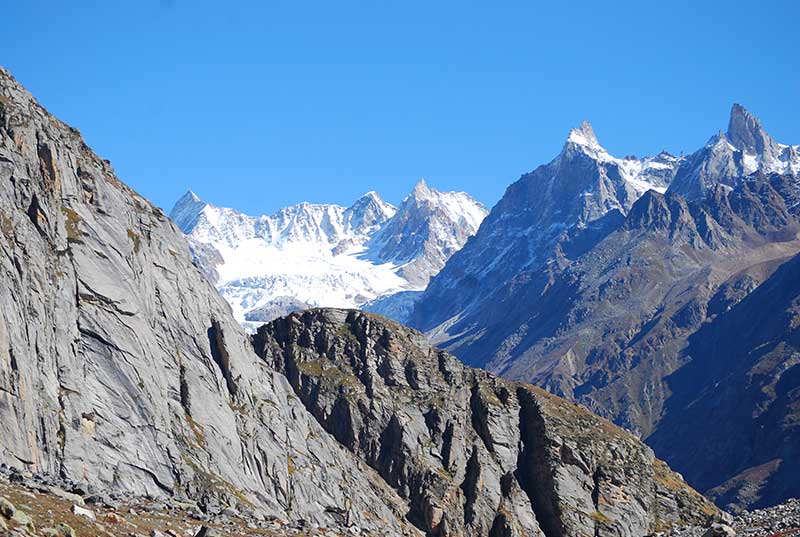
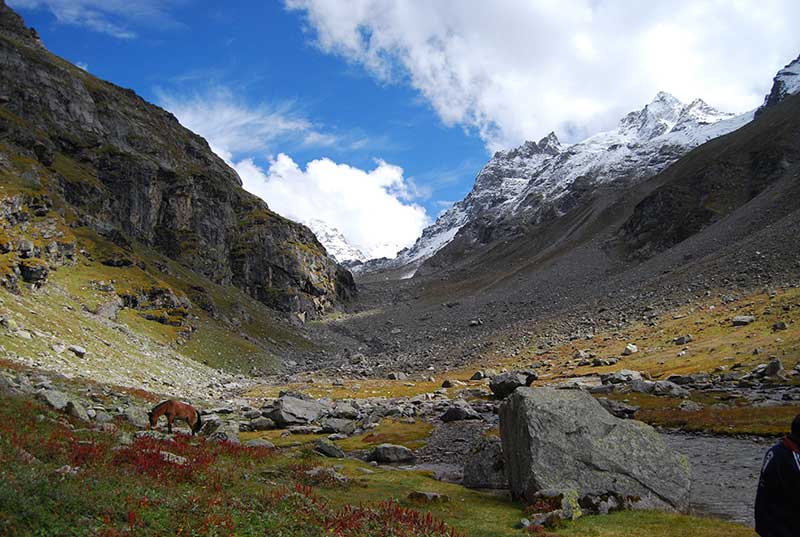
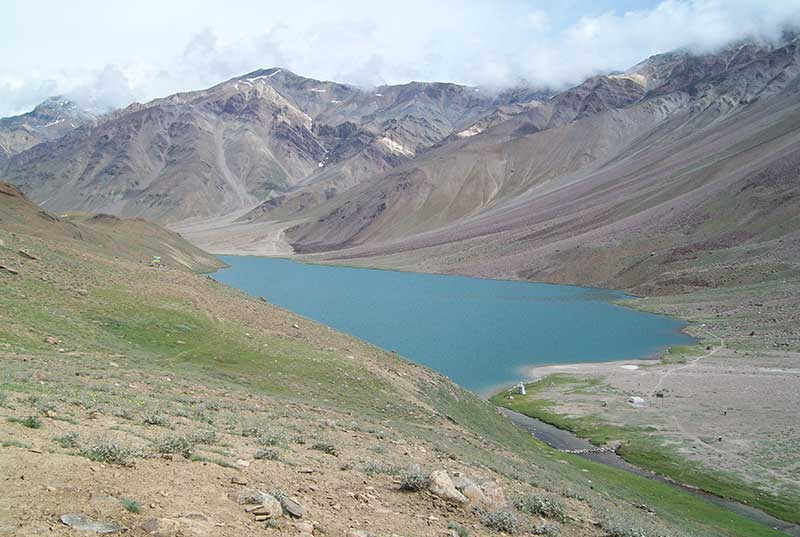
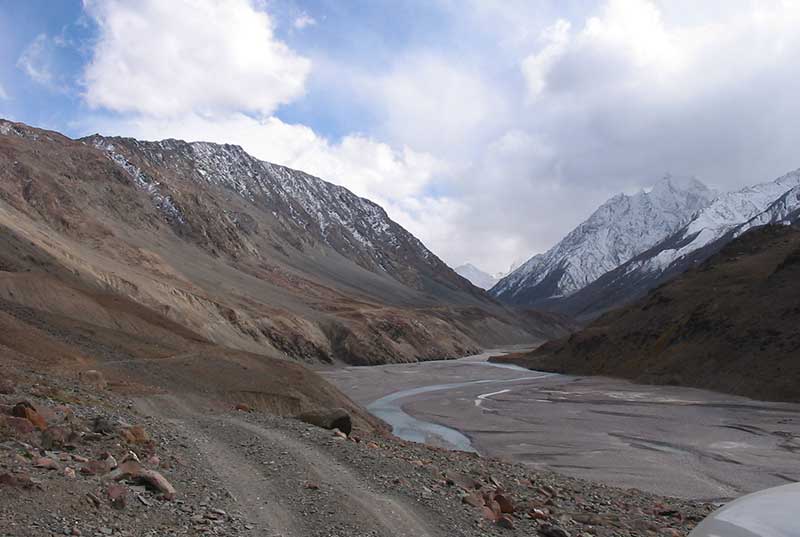
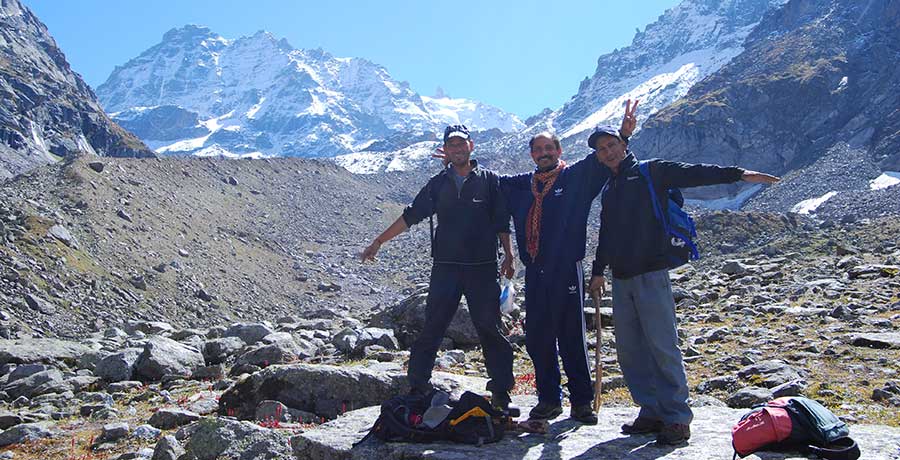
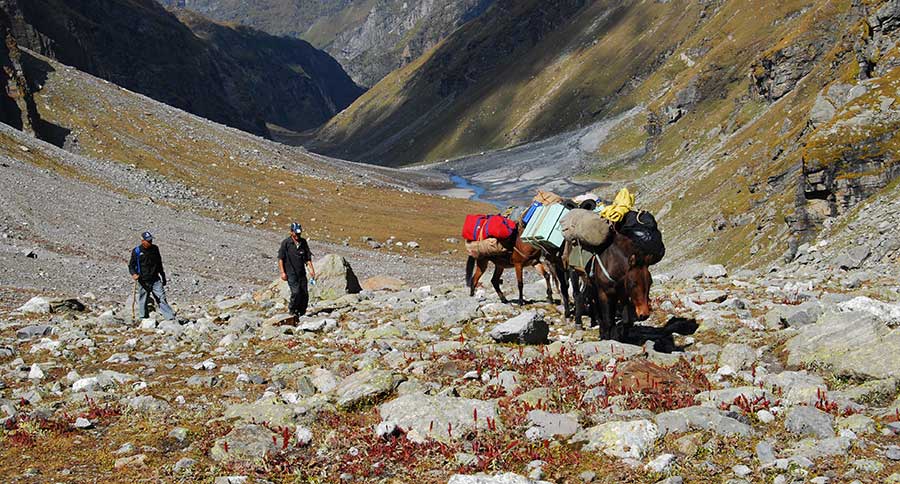
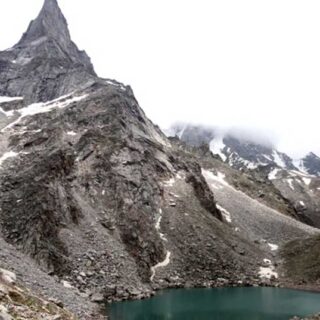
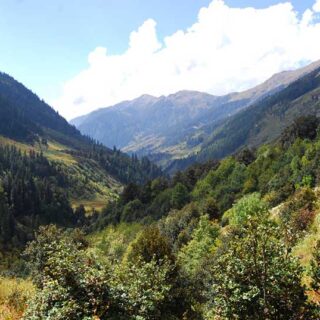
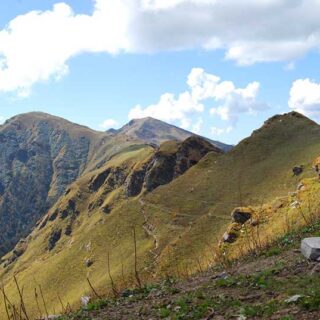
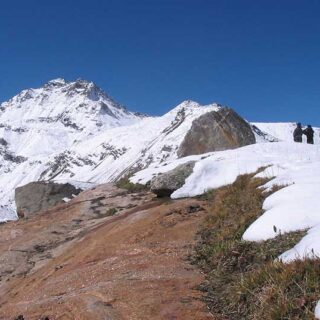



There are no reviews yet.